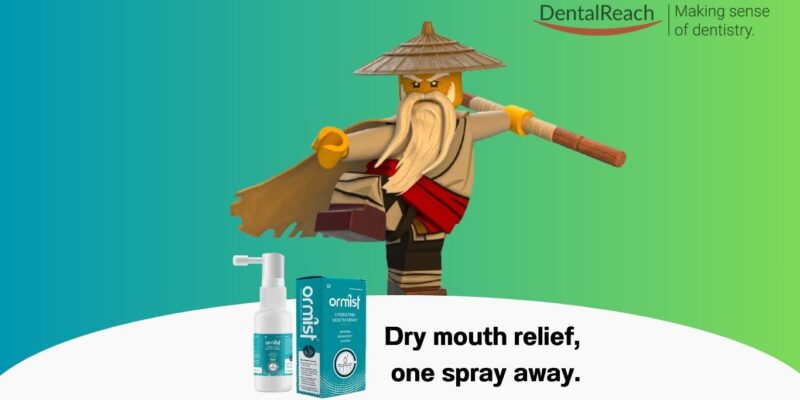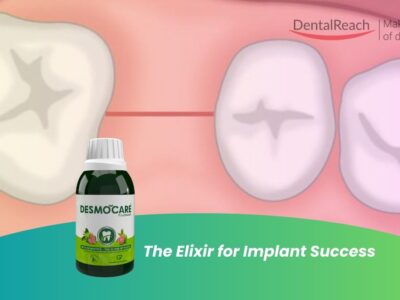Dental visits can be stressful. Mastering stress, communication and behavior management in patients helps builds rapport: patients who feel heard and understood become more relaxed and willing to cooperate during treatment. Here are pointers on how to do this:
Mastering Stress in Patients
- Simple strategies like breathing exercises, calming music, and respectful conversation are recommended to ease anxiety[1-3].
- A welcoming, calm environment—soft music or visuals, stress balls for patients’ hands—can immediately reduce tension[4][5].
- Importantly, dentists (and all staff) should listen actively and empathetically: spend time hearing each patient’s concerns without interrupting[6][7]. Studies emphasize that “listening is the most important communication skill—one every dentist should cultivate”[7].
- Allowing an anxious patient to talk through fears, even without immediately offering solutions, often provides relief. By giving full attention, making gentle eye contact and reassuring gestures (a warm tone, a nod), the dentist signals genuine care and respect. [8][5].
Mastering Communication Strategies in Patients
- Active listening: At the core of anxiety management is listening attentively. Practicing mindful listening means setting aside distractions (no rushing, no multitasking) and focusing on the patient’s words and emotions[7].
When patients speak, dentists should reflect back key points: “It sounds like you’re worried about the injection…” or simply say “I understand this can be scary.” Such reflective statements validate the patient’s feelings.
Nonjudgmental listening alone often eases fear by itself[9]. Patients notice when a dentist truly hears them; conversely, poor listening is often interpreted as lack of caring or empathy[10]. In practice, a dentist might say: “I see this makes you nervous. Tell me more about what worries you,” and then listen quietly. This effort builds trust – a crucial ingredient for cooperation[5][8].
- Verbal empathy: Verbal communication should be kind, respectful and understandable. Dentists must use simple terms instead of jargon, especially for anxious or low-literacy patients[4][11]. Explain each step in plain language: e.g., rather than “administer anesthesia”, say “I’ll numb the area so you feel little to no pain.” Encourage questions: ask open-ended questions like “What worries you most about today’s visit?” and pause to let patients answer.
Acknowledge answers: “I hear you. Many people feel that way about the drill.” Such reassurance and normalization (“you’re not alone”) calms fears and shows empathy[11][5]. Always meet anxiety with kindness, not impatience, as recommended by experts[12].
- Non-verbal cues: Body language and tone often speak louder than words. Dentists should maintain gentle eye contact and a friendly expression, lean slightly forward, and keep arms relaxed rather than crossed. A warm smile and a soft voice convey comfort[11]. Avoid sudden movements or hovering with instruments; explain what you’re doing (“I have the mirror ready, you’ll feel a little cold”) as you go. If a patient looks tense, pause and ask if they’re okay before proceeding.
Even a small friendly gesture—a comforting pat on the shoulder or offering a tissue—can humanize the encounter. In team practice, every staff member (receptionist, assistant) should exhibit the same empathy, since the first impression sets the tone[13][8].
- Building rapport: Trust grows over time and through consistency. Find small ways to connect personally: ask about hobbies or family (if patients seem open), remember names, or make light conversation about neutral topics (favorite sports, local events). However, stick to what the patient is comfortable sharing. For example, when a patient expresses fear, one dentist reported success by simply listening for 30 minutes and addressing concerns; the patient then called him “the best dentist I’ve ever seen.”[14]. Patients often bond with caregivers who show genuine interest in them as people, not just cases. Building rapport also means always addressing the patient by name and calling staff members “Mr.” or “Mrs.” unless invited to use first names. Over multiple visits, noting previous concerns and following up (“How was that last filling we did?”) reinforces the message “we care about you.”
Tip: Use the teach-back technique (as endorsed by the ADA)[15]. Ask the patient to repeat instructions in their own words (e.g., “Can you tell me how you will take the pain medicine at home?”). This ensures understanding and shows respect.
Mastering Behavior Management Across All Ages
While communication is universal, techniques vary by age and situation. Below are tailored approaches for different patient groups:
Pediatric Patients
Children’s reactions range from curious cooperation to outright refusal. The American Academy of Pediatric Dentistry emphasizes customizing behavior guidance to the child’s age, temperament, and past experiences[16]. Basic techniques include:
- Tell-Show-Do: Explain the procedure in child-friendly language (“This is the tickle-crazy toothbrush”), show the instrument on a finger or toy, then perform the action. This simple modeling demystifies treatment and reduces fear.
- Positive reinforcement: Praise desired behavior (“You sat so still – great job!”) and offer small rewards (stickers, praise) for cooperation.
- Descriptive praise: Instead of just “good boy/girl,” be specific: “I really appreciate how calmly you held your hand.” This reinforces that calm behavior helps them receive care.
- Distraction: Provide a toy, video, or deep-breathing exercise (e.g., blow out pretend birthday candles) to shift attention away from anxiety.
- Ask-Tell-Ask: Begin by asking the child/parent what they know or feel, then tell what will happen, then ask again to check understanding and feelings. This two-way talk respects the child’s perspective.
For anxious pediatric patients, parents can be a great ally. Having Mom or Dad in the operatory (when appropriate) or sit nearby can comfort a child. However, if a parent is visibly anxious, it may reinforce the child’s fear, so the dentist may coach parents to be calm role models. Use child-appropriate cues (clap hands for “all done,” or let the child squeeze a signal bulb to stop if scared). As one review notes, behavior guidance is a systematic process involving dentist’s communication with both child and parent[17].
In extreme cases, advanced guidance (not without consent) includes nitrous oxide (“happy gas”) or oral sedation. Such options should always be explained simply to children (“This medicine will help you feel sleepy and happy”) and to parents. Pain and fear control measures must be discussed openly: IDA standards explicitly state any anxieties and pain-control options should be reviewed with patients and parents[3].
Adult Patients
Many adults carry childhood fears or past traumatic experiences. A common scenario in India is the adult fearful of an extraction or surgery. Studies show extraction fear tops dental anxiety lists[2]. For these patients, use similar empathy and clear explanations. Walk through each step (“Now we’ll inject a bit of numbing – you might feel a small pinch, but I’ll go slowly”). Emphasize that they have control: agree on a hand signal to pause (“give me the thumbs-up when you’re ready for the next step”). In fact, innovative Indian research demonstrates that giving patients a simple signaling device (the “Touch N’ Tell” board) – which lets them halt treatment or request rest – significantly lowers anxiety by increasing perceived control[18]. In your practice, even a basic raised hand or squeeze ball can empower an anxious patient.
Encourage breaks and breathing: Before and during long appointments, invite patients to take deep breaths together. The ADA recommends practicing mindfulness (e.g., brief breathing exercises) to ease dental stress[19]. Negotiate small breaks: “If at any point you need to pause, just look at me.” Sitting upright and moving legs a bit can also prevent panic.
Use exposure and desensitization when possible: for example, if an adult fears the drill, let them touch it (after it’s off), or demonstrate on a finger. As they see you use it gently, their alarm may ease. Provide plenty of non-invasive “chair time” initially – for instance, let them feel the suction or wear the bib and ask about comfort, before starting invasive work. This builds familiarity and trust.
If outright refusal occurs, motivational interviewing can be integrated even with adults to explore their ambivalence: “Tell me more about what worries you about this extraction. What do you think could help you feel more comfortable?” These open-ended questions shift responsibility to the patient to voice and reconsider their fears. Coupling such dialogue with empathy usually makes adults feel more understood and invested in their care.
Elderly Patients
Elderly patients often face unique challenges: hearing or vision loss, cognitive decline, and low health literacy. They may not understand modern dental terms or feel embarrassed to ask. Communication here must be extremely clear and respectful. Always look at them when speaking (face them directly, good lighting), and speak slowly. Use large-print written instructions or demonstrate techniques using models or pictures.
Simplify language and check comprehension often, as ADA emphasizes improving health literacy through simple communication and confirm-understanding[4]. For example, after explaining a procedure or home care routine, ask them to explain back (“How will you brush these teeth?”) to ensure clarity. Include family members or caregivers when appropriate, but remember patient autonomy.
Building rapport may involve showing patience for slower responses: don’t rush answers. Older patients appreciate courtesy and reassurance. Say things like, “I will tell you exactly what we’re doing each step of the way. You can always say if you feel any discomfort.” For those with mobility issues or health concerns, schedule longer appointments and explain all safety precautions (especially during the pandemic era) to alleviate additional fears.
Encourage and motivate self-care: many elderly patients struggle with daily oral hygiene due to dexterity issues. Here motivational interviewing shines: engage them by asking what barriers they face (“What makes brushing hard for you?”), then collaboratively brainstorm solutions (“If we got you a larger toothbrush handle, could that help?”). Highlight personal values (“Keeping your mouth healthy helps you enjoy your food and talk to family”). Studies show that involving patients in their own care plan (using patient-centered techniques like MI) increases adherence and satisfaction[8][20]. For tobacco or sugar habits common in older adults, gently explore readiness to change (see MI section).
Case Scenarios: Putting It All Together
Case 1: An Anxious 7-Year-Old Refusing Treatment. Scenario: A 7-year-old boy clings to his mother and screams when told he needs a tooth filling. He is crying and will not lie back for the exam.
Approach: The dentist stays calm and kneels at the child’s level to talk. Using a friendly tone, she says, “You know, I also felt scared the first time I had my tooth fixed. But I had a little superhero sticker after, and it was okay!” She then uses Tell-Show-Do: shows him a dental mirror (“This is a tickly mirror we use to look inside your mouth”), lets him hold it, and then gently “tells” and “does” step by step. Throughout, she listens to the child (“It hurts? Oh, I’m sorry – let’s try resting.”) and offers breaks. When he lets her check the tooth, she gives immediate praise: “You were so brave sitting for a second!” Finally, she might use a small reward (“Here’s a star sticker, you earned it”). If he still resists, the dentist might involve the parent in ask-tell-ask: ask the child what worries him, then tell him calmly, then ask again to check understanding. By combining empathy, patience, and basic behavior guidance (nonverbal reassurance, distraction with a toy), the child slowly cooperates. The dentist may softly say, “I know this is hard. Do you want to hold Mommy’s hand? We’ll do one thing at a time.” This approach turns a meltdown into a tolerable experience, and the child’s tears subside as he feels heard and supported.
Case 2: Adult Fearful of Extraction. Scenario: A 40-year-old man needs a tooth pulled but has a history of a painful childhood extraction. He is tense in the chair and flatly refuses to proceed.
Approach: The dentist first acknowledges his fear empathetically: “I understand, getting a tooth pulled can be scary. Let’s talk about it.” Using active listening, the dentist lets him vent memories of pain. Then she offers clear information: “I will numb you thoroughly, so you shouldn’t feel pain. I’ll move slowly, and you’re in control. We can pause anytime you signal.” They agree he can raise his hand if he needs a break. She then practices one technique to reduce anxiety: perceived control[18]. The patient is given a clicker (or asked to raise hand) when he wants the procedure to pause. During the extraction, the dentist narrates each step: “Putting numb now, you’ll feel a small pinch… OK, you can lift your hand anytime if you need more time.” When he does pause, the dentist gently asks, “How are you doing? Anything I can do now?” This respectful pacing calms him. Post-extraction, the dentist employs MI: “I see you were really brave today. How do you feel it went?” The patient admits he was nervous but relieved it’s over. The dentist summarizes his concerns and praises his bravery, fostering positive feelings. This combined strategy (empathy, shared control, clear explanation, and a bit of MI) helps the patient conquer his fear and likely returns for future care.
Conclusion
Anxiety in the dental chair is a formidable obstacle, but it can be overcome with mindful communication and patient-centered behavior guidance. Indian dentists who actively listen, display empathy, and use clear language can dramatically reduce fear at every age. Building rapport and involving patients in decisions empowers them and fosters trust[8][5]. Techniques like Tell-Show-Do with children, supportive pacing with anxious adults, and enhanced explanations with older patients all pay dividends in cooperation and outcomes[16][1]
References
[1] [2] Dental Anxiety Among Adults: An Epidemiological Study in South India – PMC
https://pmc.ncbi.nlm.nih.gov/articles/PMC4325391/
https://www.ida.org.in/Accreditation/Details/ForPatientManagement
[4] [15] Health Literacy in Dentistry | American Dental Association
https://www.ada.org/resources/community-initiatives/health-literacy-in-dentistry
[5] [6] [12] [19] 5 tips to reduce anxiety and stress in dentists, patients during their visit | American Dental Association
[7] [9] [10] [14] Active Listening:We hear it’s vital to respected dental practices | Dental Economics
[8] [11] [13] Beyond the drill: Creating connections through empathy in dentistry | Dental Economics
[16] aapd.org
https://www.aapd.org/globalassets/media/policies_guidelines/bp_behavguide.pdf
[17] (PDF) Behavior Guidance in Pediatric Dentistry – A Review
https://www.researchgate.net/publication/352253394_Behavior_Guidance_in_Pediatric_Dentistry_-_A_Review
[18] Effect of ‘Perceived control’ in management of anxious patients undergoing endodontic therapy by use of an electronic communication system – PMC
https://pmc.ncbi.nlm.nih.gov/articles/PMC3284015/
[20] [24] (PDF) J I D A Assessment of effectiveness of motivational interviewing of parents/caregivers on dental attendance of children: a systematic review and meta-analysis
https://www.researchgate.net/publication/376415832_J_I_D_A_Assessment_of_effectiveness_of_motivational_interviewing_of_parentscaregivers_on_dental_attendance_of_children_a_systematic_review_and_meta-analysis
[21] Introduction to Motivational Interviewing for Oral Health Professionals – Arcora Foundation
https://arcorafoundation.org/motivational-interviewing/
[22] [23] [25] The effect of motivational interviewing on oral healthcare knowledge, attitudes and behaviour of parents and caregivers of preschool children: an exploratory cluster randomised controlled study | BMC Oral Health | Full Text
https://bmcoralhealth.biomedcentral.com/articles/10.1186/s12903-015-0068-9




















Comments